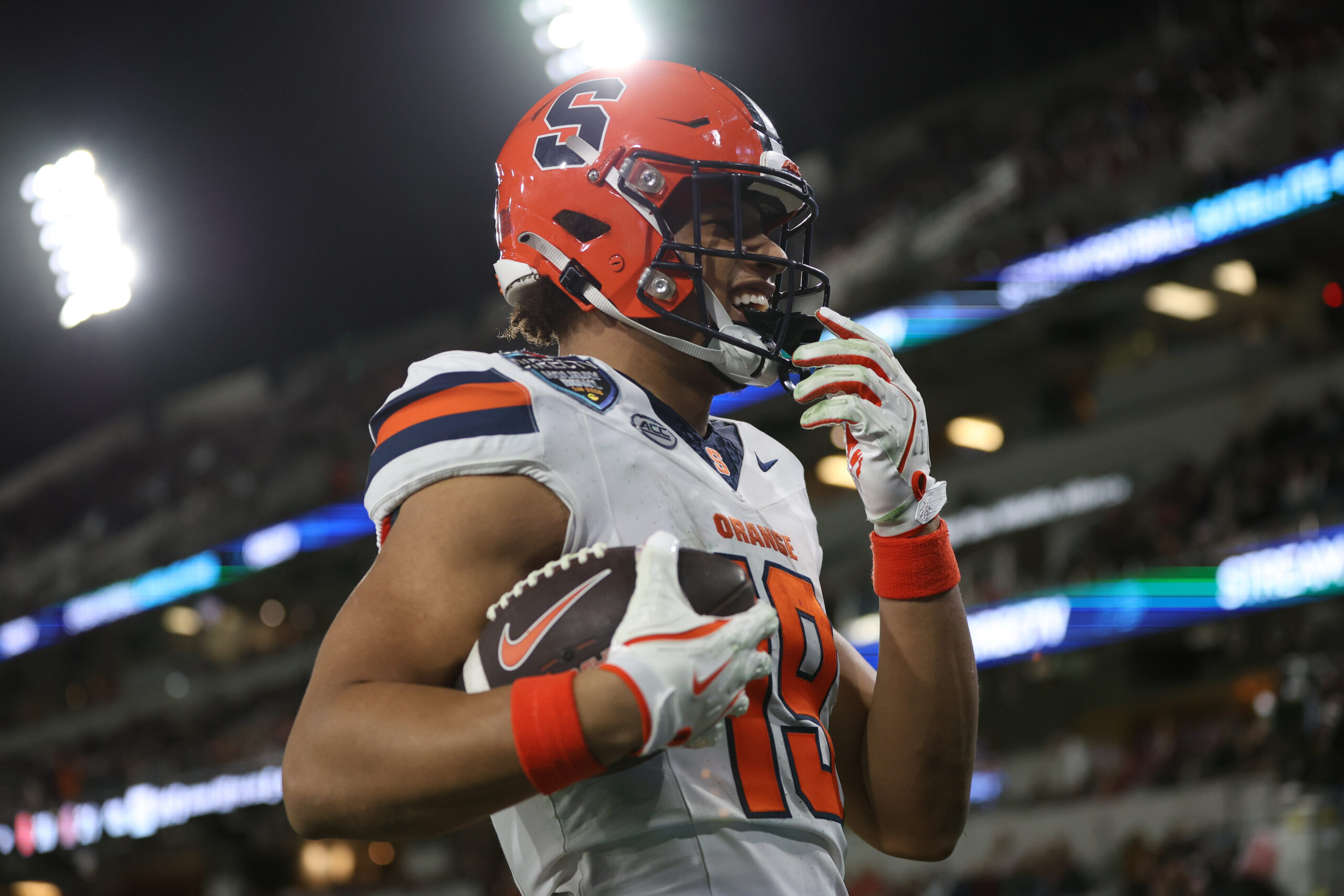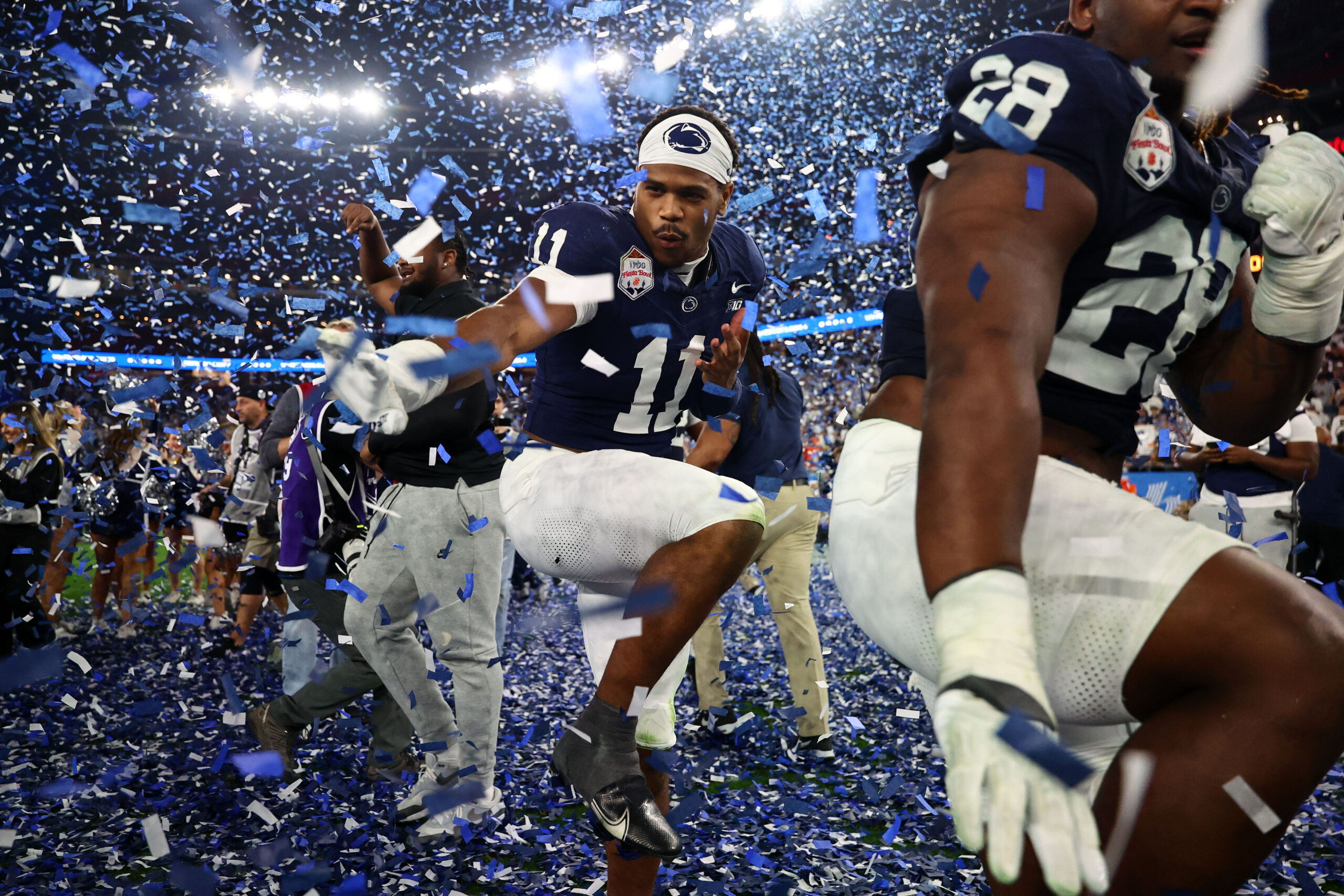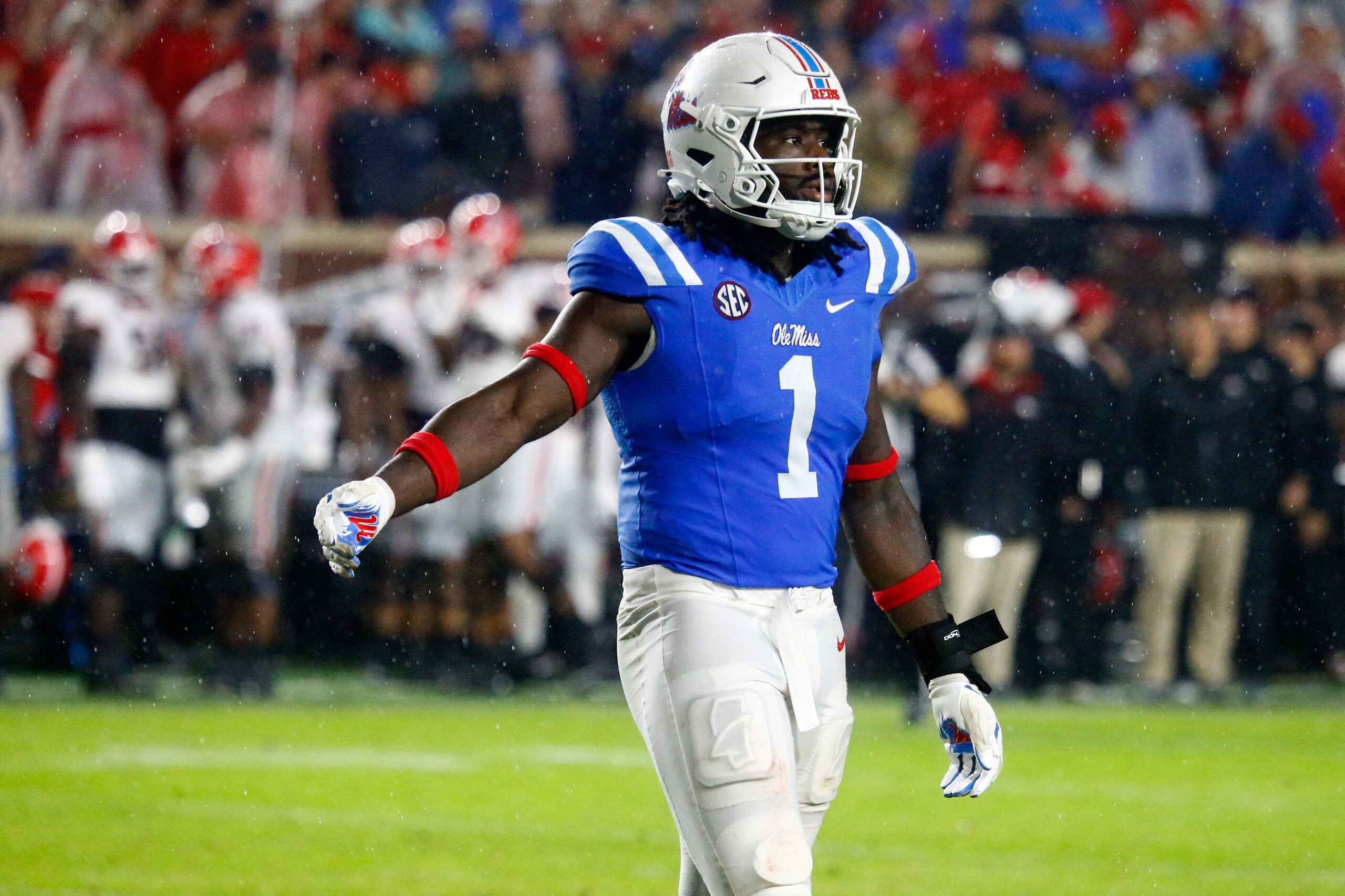NFL Draft
12/5/24
13 min read
2025 NFL Draft: Superlatives For This Year's WR Class
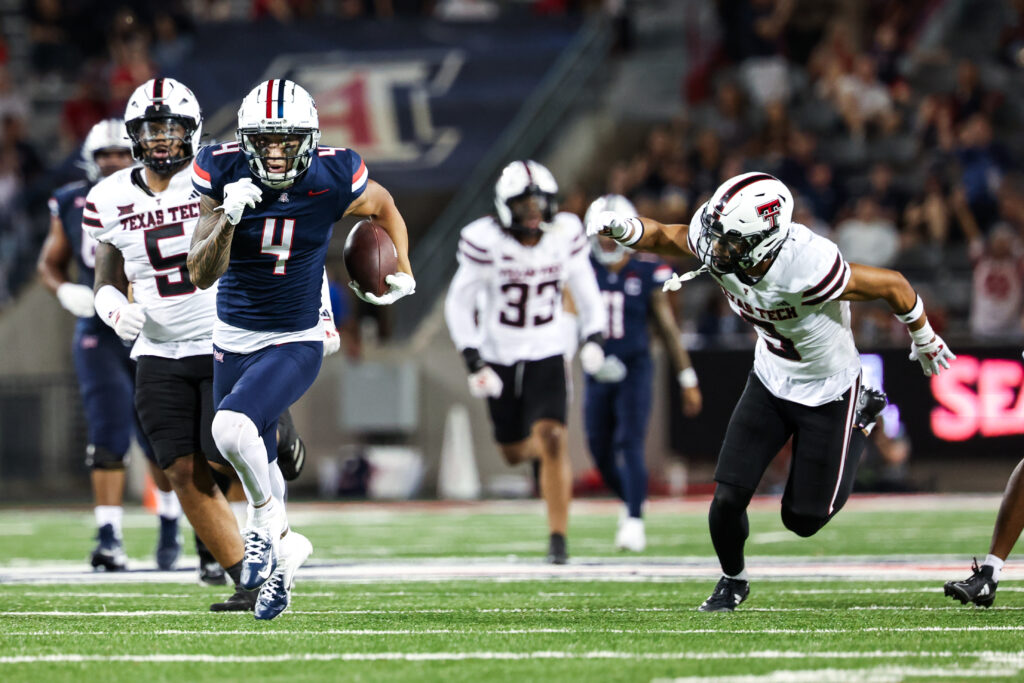
With the 2025 NFL Draft approaching, I’ve started a superlatives series to preview each position group.
This series will cover a wide range of prospects and highlight the players who stand out the most in specific categories. Today, we’re breaking down the wide receiver class.
2025 NFL Draft RB Superlatives
2025 NFL Draft WR Superlatives
BEST X-WR
Pat Bryant, Illinois 
Pat Bryant is my highest-graded pure X-receiver (I view Tetairoa McMillan as a slot, and Savion Williams could play all three positions). His speed and agility are just above average, but that’s where the negatives end.
Bryant has the ideal size and frame for an X-WR at 6-foot-3, 200 pounds. Although he isn’t the most explosive receiver off the line of scrimmage, he consistently defeats press coverage with physicality and coordinated footwork. He’s decisive and efficient in executing his release, with minimal false steps or wasted movements, and maintains active hands to counter the defensive back if he jams early.
— James Foster (@JamesFosterNFL) November 27, 2024
Bryant’s ability to win his release and exceptional focus in contested windows make him very difficult to cover down the sideline. Through Week 13, he leads Power-4 receivers with eight receptions on go or fade routes.
He’s an effective intermediate route runner, winning frequently on slants and blaze-outs. He’s capable of breaking efficiently at sharp angles and understands how to manipulate his opponent’s leverage.
— James Foster (@JamesFosterNFL) November 27, 2024
He’s also a dominant blocker and is my honorable mention for the run-blocking superlative.
Teams in search of an X-WR will value Bryant’s size, separation skills, and reliable hands. His average athletic traits might push him to Day 3, but he’s one of the most well-rounded receivers in a thin class.
Honorable Mention: Tre Harris – Ole Miss
— James Foster (@JamesFosterNFL) November 27, 2024
BEST CONTESTED CATCH WR
Tetairoa McMillan, Arizona 
As I began to fill out my list of receiver superlatives, the contested catch category was essentially a free space. There’s no one in Tetairoa McMillan’s zip code when it comes to making acrobatic catches, winning jump balls, and Mossing helpless defensive backs.
His dominance at the catch point manifests in several ways. There are times that he makes the catch due to an overwhelming size mismatch, and it’s fair to expect these types of plays to happen less often against pro competition:
— James Foster (@JamesFosterNFL) November 27, 2024
What’s more impressive and more stable when projecting to the NFL are the catches that result from elite ball tracking, focus, and coordination. McMillan’s extraordinary catch radius puts him in striking range of any pass thrown in his general direction. But simply being tall and having long arms isn’t enough to make most of these plays.
He has the spatial awareness to understand where he is in relation to the trajectory of the ball, the flexibility to contort his body at awkward angles to adjust to the pass, and the hand-eye coordination to time his actions with the ball’s arrival. And most importantly, he has strong hands to secure the catch in traffic.
— James Foster (@JamesFosterNFL) November 27, 2024
It’s easy to just dismiss “contested catch receivers” as fun college players whose play style won’t translate against equally athletic NFL defenders. That’s actually an argument I make every year, and I don’t plan on stopping.
However, McMillan is different from Hakeem Butler and N’Keal Harry because his dominance at the catch point is primarily due to supreme focus and dexterity.
Honorable Mention: Ja’Corey Brooks – Louisville

BEST ATHLETE
Savion Williams, TCU 
If we take size into account, Savion Williams is the most athletic receiver in this class. Williams is a former quarterback and was the “Biggest Sleeper” in my class-wide superlatives article, where I did a more in-depth breakdown of his game.
He’s a complete athlete with a massive wingspan, elite straight-line explosiveness, and sudden lateral movement skills. At 6036/228, with 33 ¼ inch arms, he reportedly has a 40-inch vertical and clocked 22.5 mph on the GPS.
Williams excels in the areas you would expect for a player of his archetype. He’s phenomenal in contested catch situations and looks natural, boxing out his opponent and high-pointing the ball. He has the burst and top speed to leave press corners in the dust and win on the vertical plane. And he’s dominant after the catch – any defender that’s fast enough to keep pace is likely too small to tackle him.
— James Foster (@JamesFosterNFL) November 27, 2024
He’s surprisingly fluid and sudden moving laterally and is a much more advanced route runner than you’d expect, given his lack of experience. He has rapid footwork to carve up press coverage and is quick and efficient in getting out of breaks:
— James Foster (@JamesFosterNFL) November 27, 2024
Williams is a lottery ticket receiver prospect with immense upside who has a chance to be selected in the top 50.
Honorable Mention: Isaiah Bond – Texas
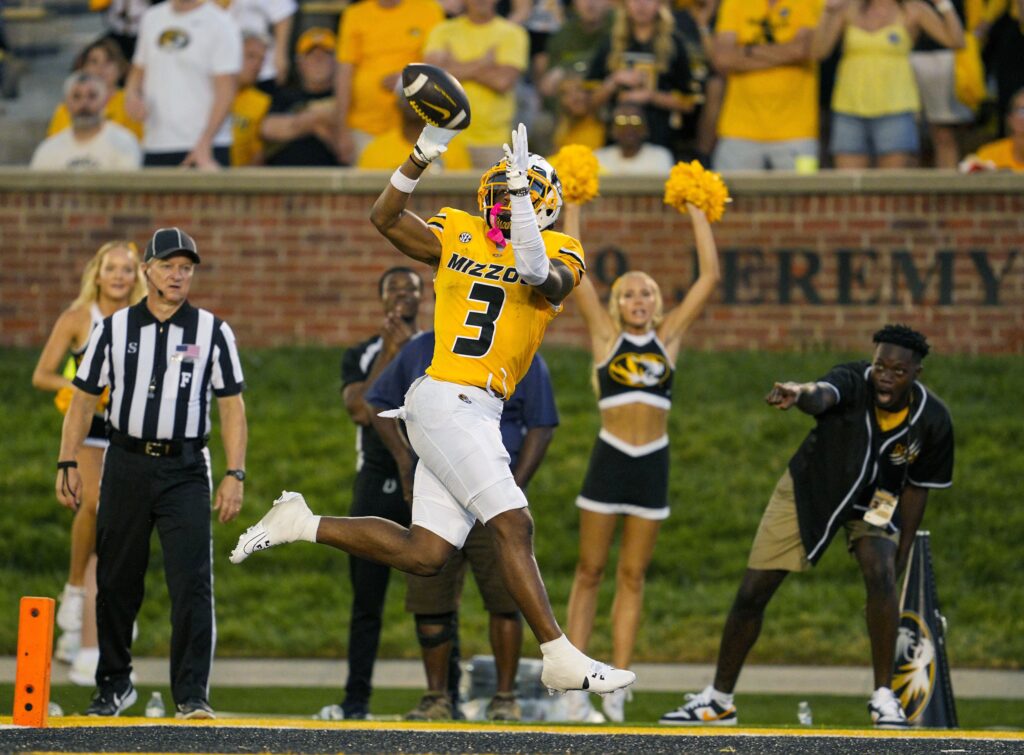
BEST AFTER THE CATCH
Luther Burden, Missouri 
Despite having a down year statistically, Luther Burden is still the best receiver in this class after the catch. He’s quick, fast, powerful, and instinctive with the ball in his hands and can turn routine underneath targets into game-changing explosive plays with a single cut.
— James Foster (@JamesFosterNFL) November 27, 2024
Since 2023, Burden has accumulated 1097 yards after the catch, fourth-most among FBS receivers. He averages 7.5 YAC per reception, almost two yards more than the median college receiver (5.6).
A couple long, unobstructed runs can inflate YAC numbers, but Burden has forced more missed tackles than any receiver this season.
Honorable Mention: Savion Williams – TCU
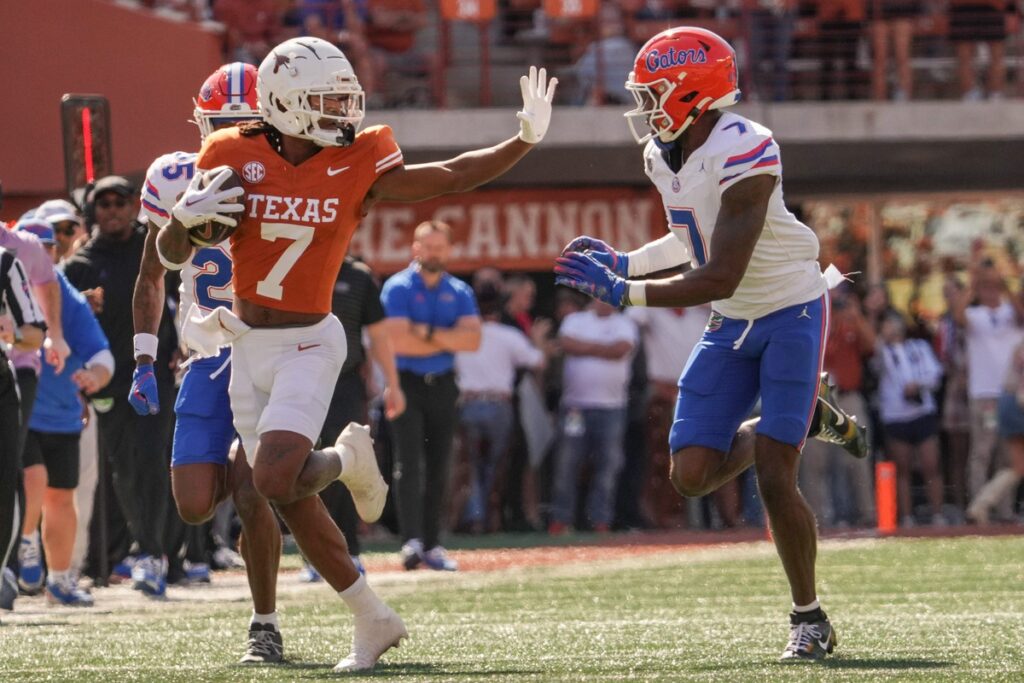
BEST DEEP THREAT
Isaiah Bond, Texas 
— James Foster (@JamesFosterNFL) November 27, 2024
Isaiah Bond was my highest graded receiver from summer scouting, and based on my expectations, this year has been a letdown. He missed a few weeks with an ankle injury, and when he’s played, he’s been mostly anonymous.
Calling him the best deep threat in this class is, to a large extent, me clinging to an evaluation from last year, which almost never ends well. I also gave Bond the “Best Separator” superlative, another label that he hasn’t earned based on his 2024 tape.
I actually see a lot of similarities between Isaiah Bond’s and Luther Burden’s disappointing seasons. The most important parallel is that I don’t think either of them deserves the majority of the blame.
It might seem misguided to compare Burden, who in Week 13 finally eclipsed half of his receiving yardage total from last season to Bond, who is on pace for a nearly identical statistical performance to 2023. But 164 of his 510 yards and three of his five touchdowns came in Weeks 1 and 3 against Colorado State and UTSA. Against SEC teams, Bond is averaging 3 receptions and 37 yards per game and has been an inconsequential passenger in Texas’s offense.
Based on his tape at Alabama, I was convinced that Bond would thrive in Steve Sarkisian’s offense, establish himself as a top-10 pick, and quickly emerge as a dynamic playmaker in the NFL. He has top-tier speed and acceleration, understands the nuances of running vertical routes, and tracks the ball at a much higher level than most college deep threats.
On this play, Bond uses a rocker step at the breakpoint of a deep post, breaking the defender’s ankles for an easy touchdown:
— James Foster (@JamesFosterNFL) November 27, 2024
Here, he uses a hesitation stem to freeze the cornerback and then blows past him and wipes down his arm to prevent him from getting in phase:
— James Foster (@JamesFosterNFL) November 27, 2024
His ability to seamlessly integrate double moves and head fakes into his vertical routes made him an elite downfield separator and showed that he had the level of route-running nuance necessary to succeed in the NFL.
Last year, Bond had nine receptions on passes of at least 20 air yards, but this year, he only has two on 10 targets. Of the eight deep incompletions, several have been inaccurate and/or uncatchable.
A couple were prayers into triple coverage that had no chance of being completed. But there have also been some missed opportunities where Bond was open and either dropped the pass or failed to win through contact:
— James Foster (@JamesFosterNFL) November 27, 2024
By no fault of his own, Bond is getting fewer downfield opportunities this year, but he hasn’t been able to convert at a high enough rate when he does get targeted.
An important factor limiting Bond’s opportunities is the amount of zone coverage he’s facing. Texas’s opponents play zone coverage on 79.1% of snaps, the second-highest rate in the FBS. I made a similar point when discussing Luther Burden’s season, but Missouri’s opponents only rank 10th in zone coverage rate.
Bond’s greatest strength is his ability to obliterate man coverage. When the defense sits back in zone for the entire game, any deep route that Bond runs will be into safety help. That’s why there have been so few shots downfield, and he’s been reduced to running hitches and crossing routes for most of the season.
Honorable Mention: Jalen Royals – Utah State
Honorable Mention: Evan Stewart – Oregon
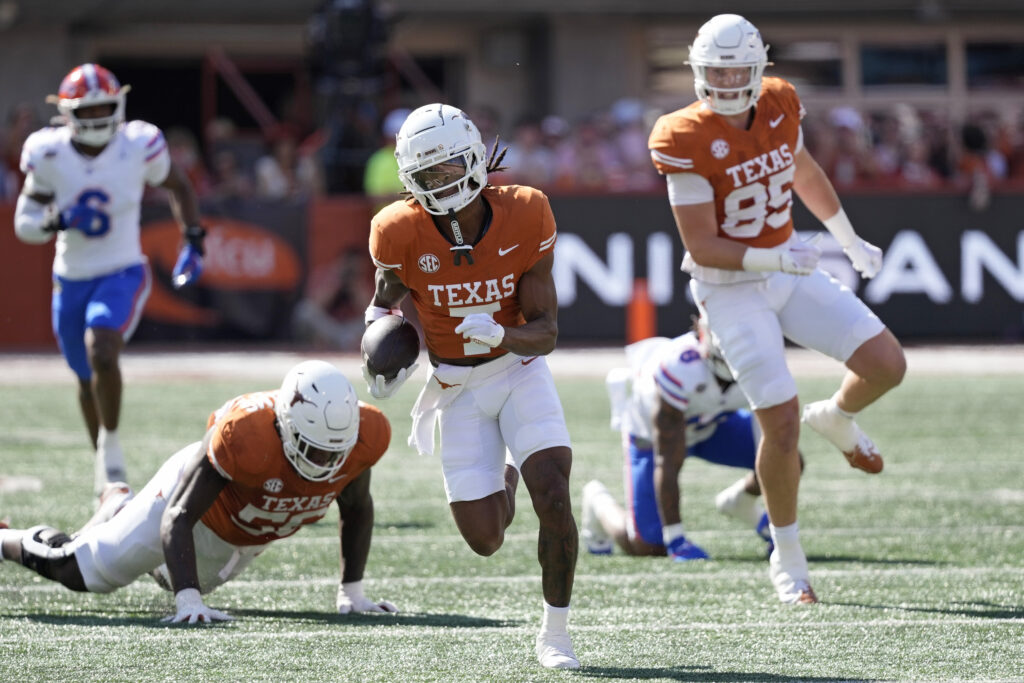
BEST SEPARATOR
Isaiah Bond, Texas 
I don’t need to spend nearly as much time on this section since most of the conclusions are the same. However, Bond’s upside is not only rooted in his ability to be a deep threat. I envision him running a similar route tree to Zay Flowers in the NFL, with a lot of comebacks and deep outs.
Isaiah Bond was uncoverable on blaze-outs last season, where his suddenness and start-stop ability was on full display:
— James Foster (@JamesFosterNFL) November 27, 2024
Unfortunately, these routes are not a significant part of Sarkisian’s offense, so his biggest strength has been made irrelevant. The high zone coverage rate has also prevented Bond from displaying his route-running ability, as very few of his routes are actually being covered by a single player.
Most of the time, he’s running into space, and his ability to get open depends on how the defenders decide to play the route concept.
Honorable Mention: Emeka Egbuka – Ohio State
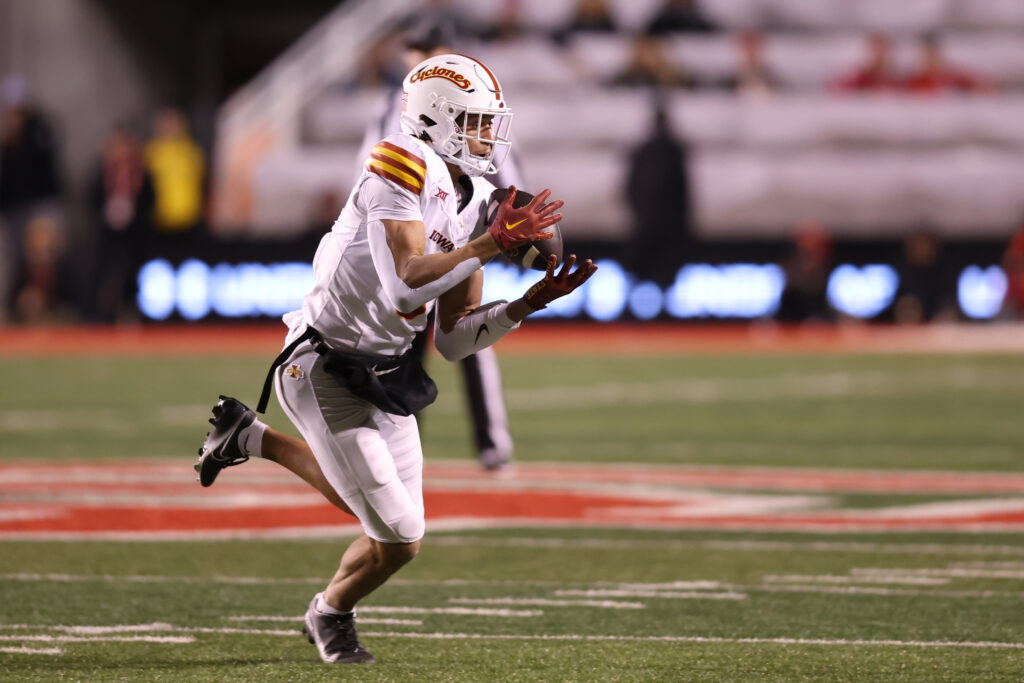
BEST HANDS
Jayden Higgins, Iowa State 
Jayden Higgins is the safety blanket of the 2025 wide receiver class. He has a remarkable track record of catching the football, with just four drops on 274 targets in the last three seasons.
— James Foster (@JamesFosterNFL) November 27, 2024
Forty-two receivers in the 2025 Draft class have been targeted at least 200 times since 2022, and Higgins is the only one with fewer than six drops.
Honorable Mention: Travis Hunter – Colorado

BEST STOPS & COMEBACKS
Evan Stewart, Oregon 
The ability to stop is one of the most underrated traits for a wide receiver. Players who can transition from max speed to zero in just a couple of throttle steps can threaten defensive backs along the entire length of the field.
If a receiver is unable to decelerate efficiently, defenders can give them more cushion and take away vertical routes, knowing they’ll have time to close on a hitch or comeback. However, receivers who can push vertically, force the defender to lean upfield, and then instantly cut off their route are extremely difficult to cover.
After watching comeback cutups for most of the 2025 receivers, I was surprised at how long it took to find someone who could run this route efficiently. But Oregon WR Evan Stewart was one of the lone bright spots in an otherwise stiff class.
As a 175-pound receiver who runs in the 4.3s, Stewart can shift gears with almost no delay. His field-stretching speed has to be respected, but doing so makes it easier for him to separate on the comeback.
— James Foster (@JamesFosterNFL) November 27, 2024
This two-play sequence against Denzel Burke is a perfect example of the lose-lose situation that players like Evan Stewart create for defensive backs.
On the first play, he torches Burke on a stop-and-go for a 69-yard gain. A couple of drives later, he accelerates into a speed release, forcing Burke to play the front hip, but Stewart cuts off his route instantly, creating 3-4 yards of separation.
— James Foster (@JamesFosterNFL) November 27, 2024
Committing enough in one direction to properly defend it leaves the opposite direction completely exposed.
Honorable Mention: Kyren Lacy – LSU

BEST RUN BLOCKER
Da'Quan Felton, Virginia Tech 
Da’Quan Felton is an athletic project whose receiver tape was not impressive. He was on Feldman’s Freaks List and got invited to the Senior Bowl, so there’s clearly some upside, but he is not ready to contribute to an NFL passing game.
His run-blocking tape, on the other hand, was outstanding and enough to dethrone Pat Bryant, whom I had penciled in for this superlative.
Felton is 6042/216 with 33-inch arms and reportedly runs a 4.42 in the 40-yard dash. His size-speed profile alone would be enough to overwhelm most of the defensive backs he’s tasked with blocking, but his effort and technique make him a force in the run game.
— James Foster (@JamesFosterNFL) November 27, 2024
What stood out even more than the highlight blocks was the lack of negative plays. The standards for wide receiver run-blocking tape are incredibly low compared to offensive linemen or even a tight end. Most receivers are simply not built to run block, and even the good ones lose a lot of reps. A 3:2 win-loss ratio is above average, especially at the college level.
But Felton doesn’t ever mess up. He doesn’t miss assignments, whiff on blocks, or get pushed into gaps. I got through three full games of tape before I saw a play that could potentially be negatively graded. His rare miscues are minor and rarely have a negative impact on the play.
Felton needs a lot of development as a receiver before he’s playable in the NFL, but his run-blocking tape being this good shows that he’s invested and makes me more optimistic that he could significantly improve in other areas.
Honorable Mention: Pat Bryant – Illinois
Make sure to check out our new home for all of our NFL Draft content.




